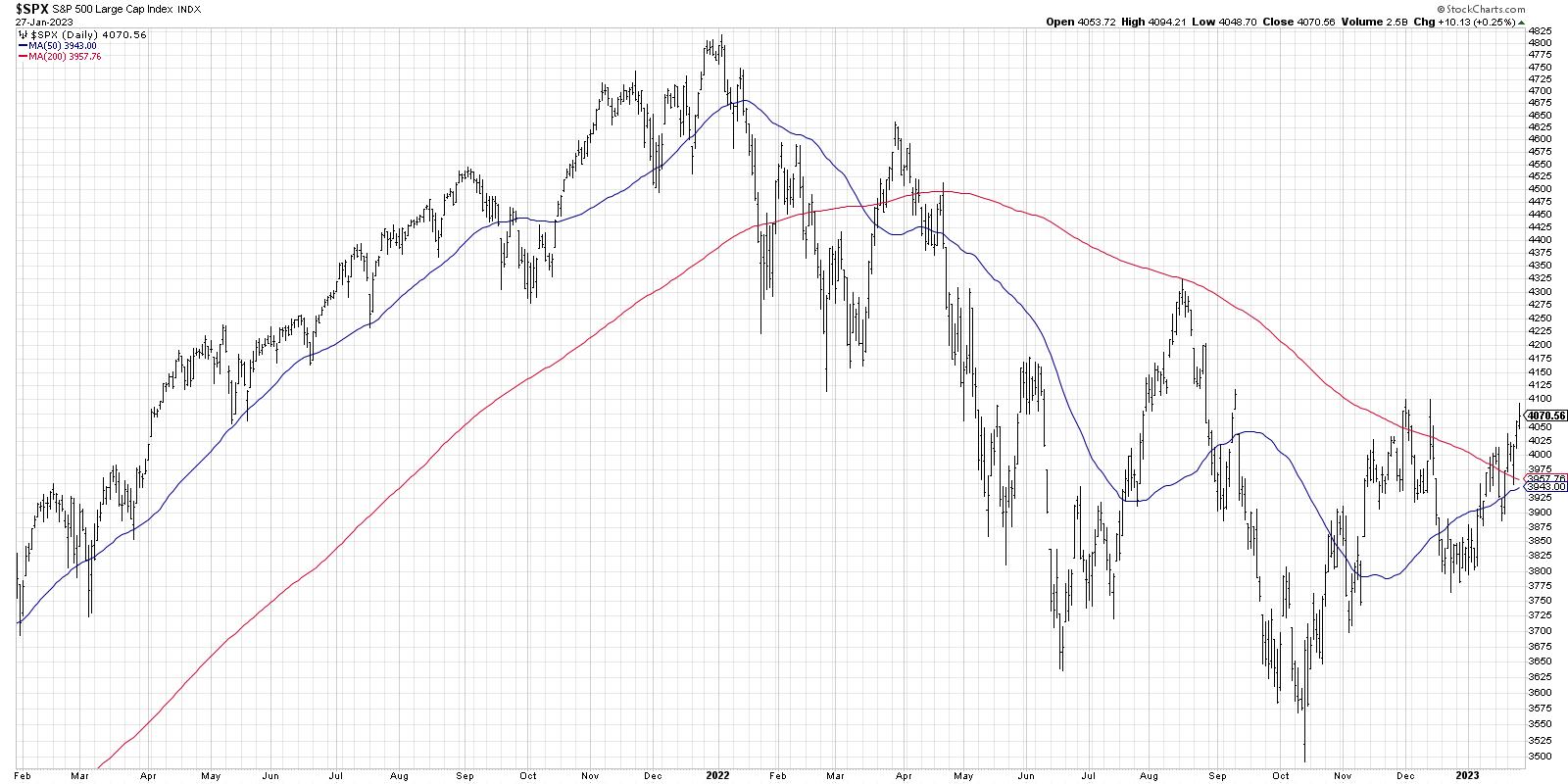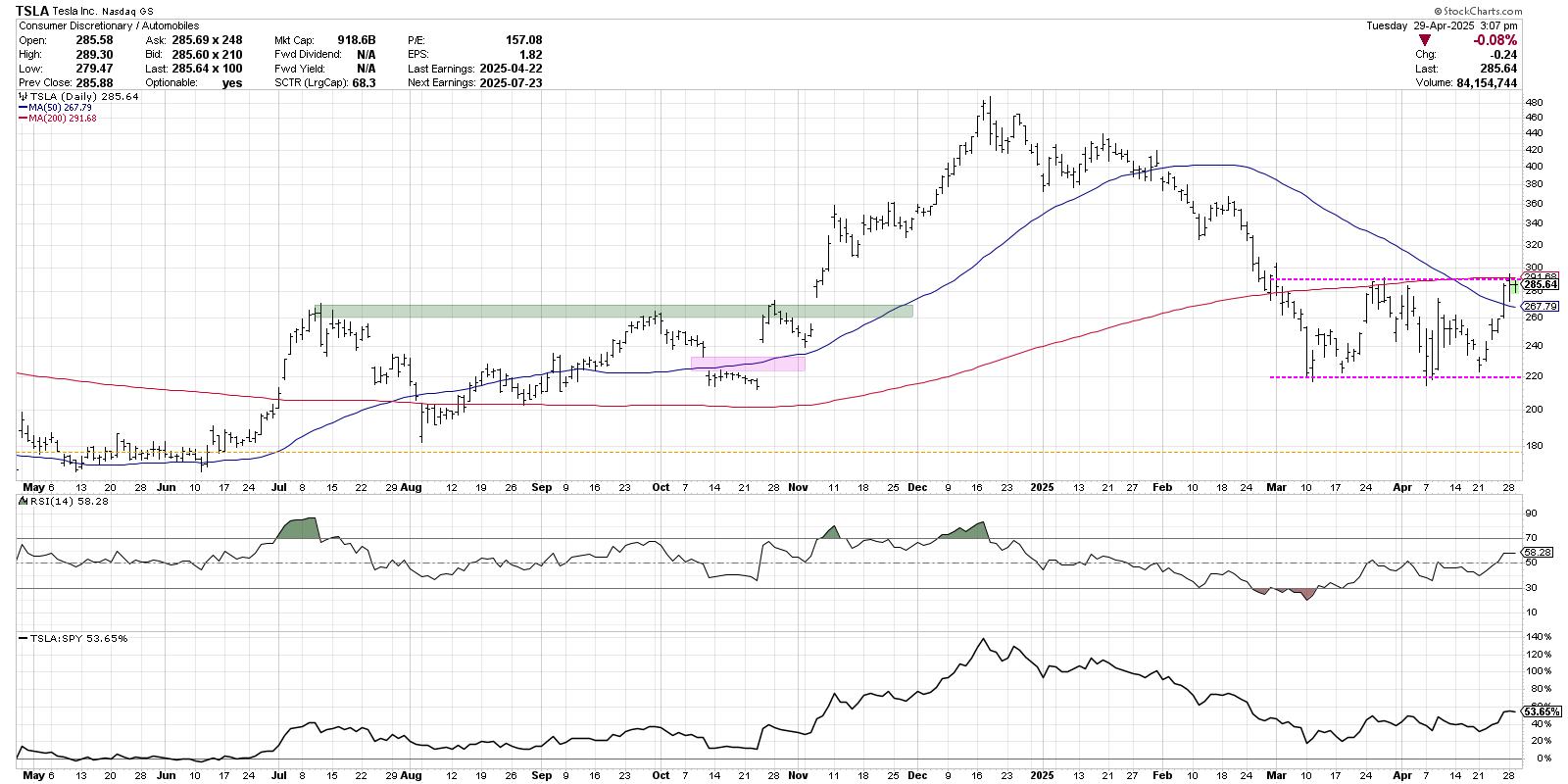How much weight should we give to the fact that the S&P 500 Index broke through its 200-day mark? moving average (MA) this week? If history is any indication, this is actually quite a momentous occasion. Unless it’s a repeat of March 2022, in which case we’re now poised to make new lows at any moment.
To be clear, any signal that is considered bullish or bearish is based on the average reaction in the history of financial markets. So rather than a signal always being 100% bullish or 100% bearish, I tend to think in terms of trends. In short, we should ask ourselves, “What usually happens after this signal occurs?”
Today we’re going to dive into a brief history of the S&P 500 and its 200-day moving average.
The 200 days as a market barometer
One of my mentors used to say, “Nothing good happens below the 200-day moving average.” To put it another way, it pays to be patient when going above the 200-day moving average, because until then it is it’s a bear market rally at best.
Way back in 2021 (not that long ago actually!) $SPX remained well above its 200-day moving average. In fact, it has tested the 50-day moving average many times, and pretty much every one of those tests has been a decent buying opportunity.
When the S&P 500 fell below its 50-day and 200-day moving averages in January 2022, it indicated something was different. This is the kind of “character change” I hope to see in my daily and weekly market analysis routines. Attempts to break out of the 200-day mark in August and November 2022 were unsuccessful. So if I see the price break above this moving average earlier this month, then the subsequent string of higher swing highs over the last five trading days, I have to consider that a bullish tell.
Next week I would like to see a confirmed break above the 4100 level which I believe would pave the way for a retest of the August 2022 high around 4300. But let’s continue our analysis of market history and some consider alternative approaches to the 200-day moving average.
The moving average crossover technique
While there is often a lot of noise when we hit a “Golden Cross” or “Death Cross” on the major averages, I have found that these are not the most effective methods of determining uptrends and downtrends. While the timing of these signals may not be perfect, I would concede that the appearance of a golden cross next week (which seems highly likely if we continue to rally around the Fed meeting) will signal even greater strength in stocks from the October low would confirm .

You’ll notice on this chart that when the 50-day moving average (blue) crosses above the 200-day moving average (red), it’s often way behind the bottom. And that makes sense for a trend-following indicator. The most recent buy signals came in July 2020 (well after the March low) and April 2019 (after a big rally from the December 2018 low).
While waiting for the golden cross may not feel like the best timing signal ever, the fact remains that during a secular bull market phase (which we arguably still find ourselves in), these signals often lead to much stronger gains.
We could also take out the 50-day moving average and just look at the slope of the 200-day moving average. on The last bar this week my guest Willie Delwiche did a great job explaining why the 200 day slope can be an important data point.

You can easily see the relationship between the slope of the 200-day moving average (in purple on this chart) and the trend of the highs and lows in the raw price data (in light gray). So if the 200-day price is sloping down and then turning up, it might be a better indication of an up move than some of the other techniques we’ve discussed.
All together with other indicators
However, you have to remember that moving averages don’t just appear in a vacuum. There are other indicators that we can use to confirm or disprove the signals we find in a simple moving average pattern analysis.
Let’s add those percentage price oscillator (PPO) and Relative Strength Index (RSI) on the weekly S&P 500 chart and see how the current configuration relates to other market declines. Now that we’re using a weekly chart, I’m showing the 40-week moving average (similar to the 200-day moving average and shown in red) and the 150-week moving average in green.

If you look at 2022-2023 and compare it to 2015-2016 and 2007-2008, you’ll see that these factors are all the same for the S&P 500 index:
- A new all-time high followed by a lower high and failure to hold the 40-week moving average, which then turns lower
- A retest of the 40-week moving average from below, then a break below the 150-week moving average
- The PPO gives a buy signal, followed shortly after by another sell signal
- The RSI is showing bullish momentum divergence
But then the patterns start to diverge a bit. In 2008, the S&P failed to break back above the 40-week moving average. There was no additional buy signal from the PPO and the RSI plunged into oversold territory as the $SPX accelerated lower over the next six months.
However, in 2016, the S&P 500 briefly fell below the 150-week moving average before climbing back above this long-term barometer. The index then moved above its 40-week moving average, the RSI rose above 50 and the PPO generated a new buy-signal.
Now if you look at the current configuration, you’ll see that it’s much closer to 2016 than 2008. The conclusion? This could be just the beginning of a bullish recovery as positive momentum builds for equities.
Would you like to digest this article in video format? You can find it over there my youtube channel.
RR#6,
David
hp Are you ready to improve your investment process? Cash my youtube channel!
David Keller, CMT
chief market strategist
StockCharts.com
Disclaimer: This blog is for educational purposes only and should not be construed as financial advice. The ideas and strategies should never be used without first assessing your own personal and financial situation or without consulting a financial professional.
At the time of publication, the author has no position in the securities mentioned. All opinions expressed herein are solely those of the author and in no way represent the views or opinions of any other person or entity.

David Keller, CMT is Chief Market Strategist at StockCharts.com, where he helps investors minimize behavioral biases through technical analysis. He is a frequent presenter on StockCharts TV and links mindfulness techniques to investor decision-making on his blog, The Mindful Investor. David is also President and Chief Strategist at Sierra Alpha Research LLC, a boutique investment research firm focused on risk management through market awareness. He combines the strengths of technical analysis, behavioral finance and data visualization to identify investment opportunities and enrich advisor-client relationships.
learn more





